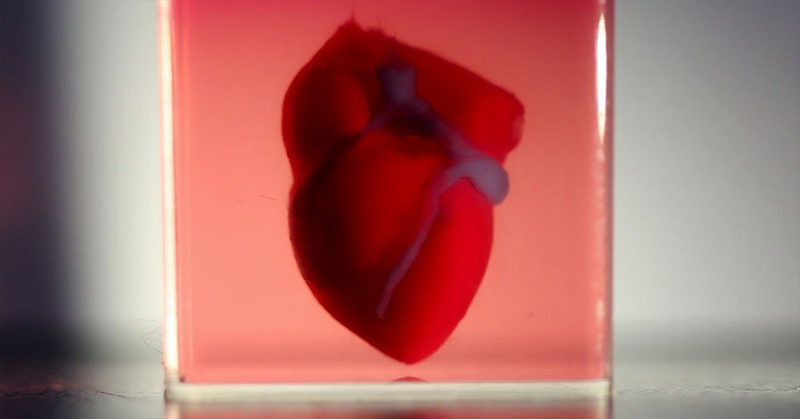Researchers at Tel Aviv University have achieved a groundbreaking milestone by creating the world’s first 3D-printed heart using a patient’s own cells and biological materials. This innovative approach could revolutionize the treatment of heart disease, which currently claims the lives of 655 thousand Americans each year. With only about 2,000 heart transplants available annually for the 3,000 people on the waiting list, this 3D-printed heart offers a promising solution to the organ shortage crisis.
Professor Tal Dvir, leading the study, emphasized the significance of their achievement, stating that this 3D-printed heart is truly unique as it contains cells, blood vessels, ventricles, and chambers. Previous attempts at creating 3D-printed hearts lacked these essential components, making this advancement a major leap forward in tissue engineering.
The process involved taking a biopsy of fatty tissue from patients, reprogramming the cells into pluripotent stem cells, and creating a personalized hydrogel ink using the extracellular matrix. By combining these cells with the hydrogel, the researchers successfully developed patient-specific cardiac patches with blood vessels, ultimately constructing an entire heart.
Professor Dvir stressed the importance of using native cells to minimize the risk of rejection by the patient’s immune system. This personalized approach ensures that the 3D-printed heart matches the immunological, cellular, biochemical, and anatomical properties of the patient, paving the way for future advancements in organ replacement technology.
Looking ahead, the researchers plan to further develop the 3D-printed heart to enhance its functionality. With the ultimate goal of creating larger human hearts using this technology, they envision a future where organ printers could be commonplace in hospitals worldwide, transforming the landscape of organ donation and transplantation.






